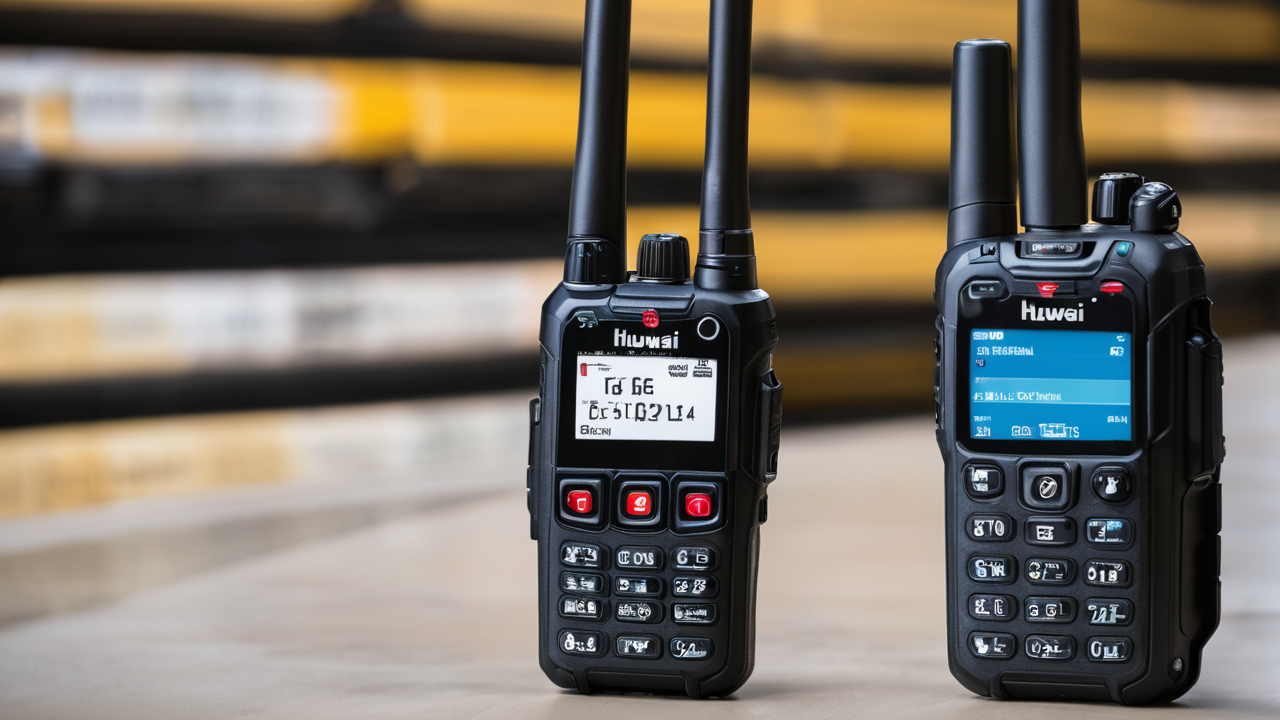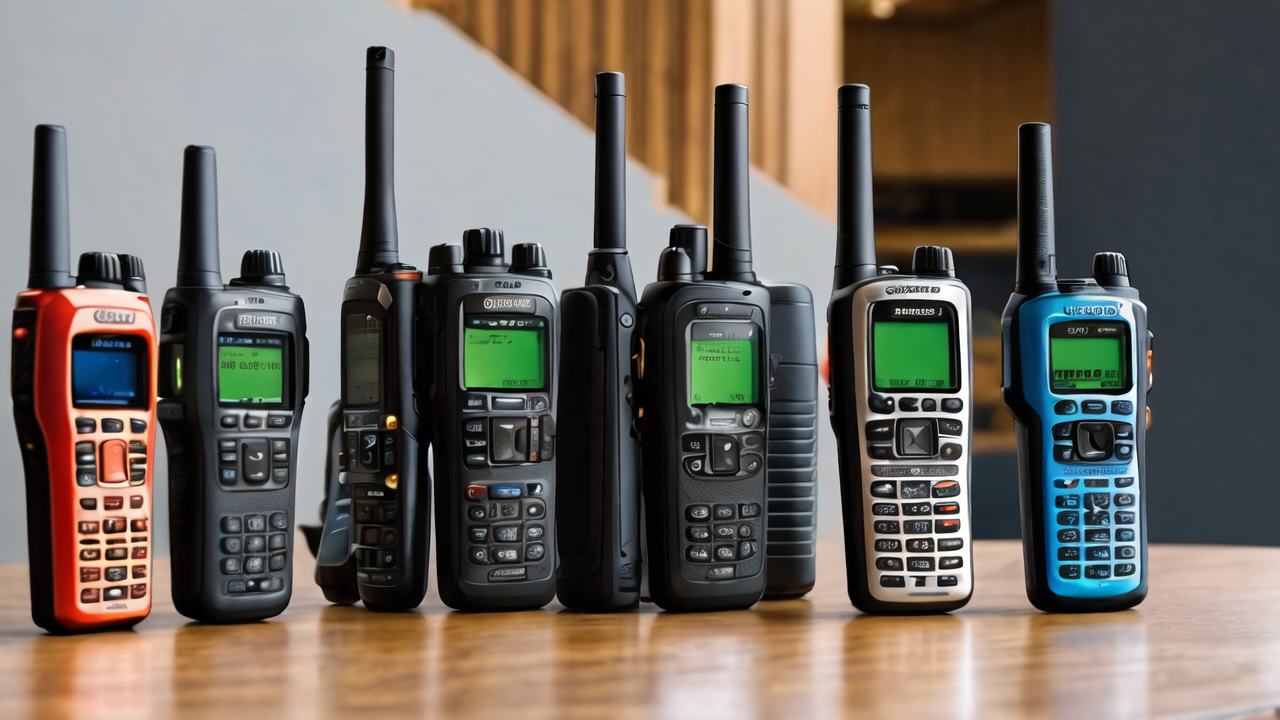Understanding the Landscape of Professional Walkie-Talkies
The Evolution of Walkie-Talkie Technology in the United States
Walkie-talkies have come a long way since their inception. In the US, they've evolved from bulky military devices to sleek, powerful tools. Early models were limited in range and features. Today's versions offer crystal-clear audio and extended coverage.

Modern walkie-talkies use digital technology for better sound. They now have noise cancellation and voice activation. Many can connect to cellular networks for nationwide reach. Some even offer GPS tracking and emergency alerts.
The focus has shifted to user-friendly designs and robust build quality. Manufacturers are constantly improving battery life and durability. This evolution has made walkie-talkies essential in many industries across the US.
Key Features to Look for in a Professional Walkie-Talkie
When choosing a professional walkie-talkie, several features are crucial:
- Range: Look for devices that offer long-range communication.
- Battery Life: Longer battery life ensures uninterrupted use during long shifts.
- Durability: Rugged construction is vital for harsh work environments.
- Audio Quality: Clear sound is essential for effective communication.
- Channel Capacity: More channels allow for organized team communication.
- Privacy Features: Encryption and private channels protect sensitive information.
- Weather Resistance: Water and dust resistance are important for outdoor use.
- Expandability: The ability to add accessories can enhance functionality.
Consider these features based on your specific needs. The right combination will ensure optimal performance in your work setting.
The Legal Perspective: Regulations and Standards in the US
In the US, walkie-talkie use is regulated by the Federal Communications Commission (FCC). Users must follow specific rules to stay compliant. Some key points to remember:
- Licensing: Certain frequencies require an FCC license.
- Power Limits: The FCC sets maximum power output for different frequency bands.
- Frequency Allocation: Different industries have designated frequency ranges.
- Privacy Laws: Users must respect privacy regulations when communicating.
It's crucial to understand these rules before purchasing or using walkie-talkies. Violations can result in fines or legal issues. Always check current FCC guidelines to ensure compliance.
Top Picks for Nationwide Professional Walkie-Talkies
Reviewing the Market Leaders: What Sets Them Apart
The top walkie-talkie brands in the US market stand out for various reasons:

- Motorola Solutions: Known for reliability and advanced features.
- Kenwood: Offers excellent audio quality and rugged designs.
- Hytera: Provides cost-effective options with good performance.
- Icom: Specializes in marine and aviation communication devices.
- Cobra: Popular for consumer-grade and entry-level professional models.
These brands excel in different areas. Motorola leads in innovation and build quality. Kenwood focuses on audio clarity. Hytera offers great value for money. Icom dominates specific industries. Cobra provides accessible options for various users.
Choosing the right brand depends on your specific needs and budget. Consider factors like industry requirements, team size, and work environment.
Innovative Features That Enhance Communication Efficiency
Modern walkie-talkies come with features that boost efficiency:
- GPS Tracking: Allows real-time location monitoring of team members.
- Text Messaging: Enables silent communication when voice isn't ideal.
- Bluetooth Connectivity: Allows use of wireless accessories for hands-free operation.
- Multi-Channel Scanning: Helps monitor multiple channels simultaneously.
- Voice Activation: Enables hands-free communication in busy environments.
- Emergency Alerts: Quickly notify others of dangerous situations.
- Noise Cancellation: Improves clarity in loud work settings.
- Over-the-Air Programming: Allows remote updates and configuration.
These features can significantly improve team coordination and safety. They make walkie-talkies more versatile and valuable in various professional settings.
Cost-Benefit Analysis: Investing in Quality
When considering professional walkie-talkies, it's important to weigh costs against benefits. High-quality devices may have a higher upfront cost. However, they often provide better value in the long run.
Premium models offer:
- Longer lifespan, reducing replacement frequency
- Better reliability, minimizing communication breakdowns
- Advanced features that improve productivity
- Stronger build quality, reducing repair costs
Cheaper options might seem attractive initially. But they can lead to higher long-term costs due to frequent replacements or repairs. They may also lack crucial features needed for efficient operations.
Consider your budget, but also factor in long-term savings and benefits. A well-chosen, quality walkie-talkie system can significantly boost your team's effectiveness and safety.
Implementing Nationwide Walkie-Talkies for Maximum Impact
Best Practices for Deployment and Management
Implementing a nationwide walkie-talkie system requires careful planning. Here are some best practices:

- Assess Your Needs: Determine coverage areas and team sizes.
- Choose Compatible Models: Ensure all devices work together seamlessly.
- Set Up Clear Protocols: Establish communication guidelines for users.
- Create a Channel Plan: Organize channels for different teams or purposes.
- Regular Maintenance: Schedule routine checks and updates.
- Backup Systems: Have contingency plans for system failures.
- Security Measures: Implement encryption and access controls.
- Scalability: Choose systems that can grow with your organization.
Following these practices will help ensure smooth implementation and operation. It will maximize the benefits of your walkie-talkie system across the nation.
Training and Education: Empowering Your Team
Proper training is crucial for effective use of nationwide walkie-talkies. Here's what to include in your training program:
- Basic Operation: Teach users how to use all device functions.
- Communication Protocols: Explain standard procedures and etiquette.
- Troubleshooting: Show how to handle common issues.
- Safety Features: Demonstrate emergency functions and alerts.
- Legal Compliance: Educate on FCC regulations and company policies.
- Advanced Features: Train on specialized functions for power users.
Regular refresher courses can help maintain high standards. Consider creating user manuals and quick reference guides. These resources can support ongoing learning and proper usage.
Empowering your team with knowledge ensures they can fully leverage the walkie-talkie system. This leads to better communication and increased productivity across your nationwide operations.
The Future of Professional Walkie-Talkies in the US Market
The future of professional walkie-talkies in the US looks promising. Several trends are shaping the industry:
- Integration with Smartphones: Many new models can connect to mobile devices.
- IoT Connectivity: Walkie-talkies are becoming part of larger IoT ecosystems.
- AI-Powered Features: Voice recognition and smart assistants are being integrated.
- Enhanced Security: Advanced encryption methods are being developed.
- Improved Battery Technology: Longer-lasting, fast-charging batteries are emerging.
- 5G Compatibility: Some models are starting to leverage 5G networks for extended range.
These advancements will make walkie-talkies even more versatile and powerful. They'll continue to be essential tools in many industries across the US.
As technology evolves, so will the capabilities of professional walkie-talkies. Staying informed about these trends can help you make future-proof choices for your communication needs.


